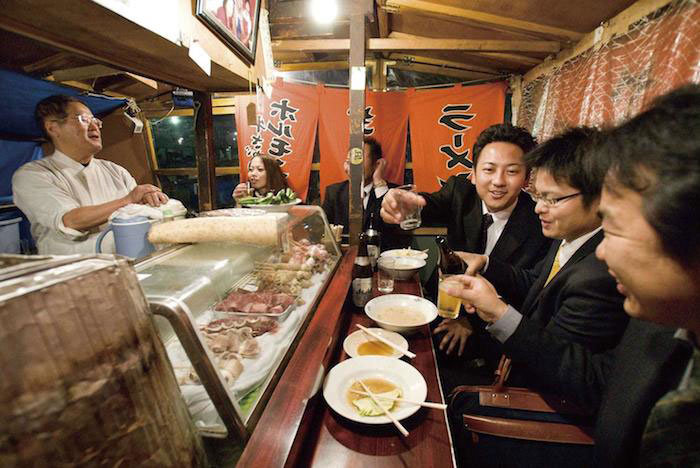Japanese Culture: Ramen
Ramen: “The emperor” of Japanese cuisine.

Photo credits: narutonoodle.com/
Until a few years ago, for ethnic cuisine enthusiasts, going to a Japanese restaurant strictly referred to taste Sushi: a dish made of raw fish and rice.
This dish, with its colorful and evocative shapes, winks at the most fashionable diners (but not just them!), who have the opportunity to taste “first with their eyes than with their mouth”. But now another famous dish in Japan has finally made its way to our tables, with many people going crazy about it.
We are talking about Ramen (ラーメン,拉麺 rāmen), perhaps the real representative dish of the country, and so famous throughout Japan that each region boasts a different way to prepare it. Different region, different recipe. Let’s taste them all then…
A soup with many ingredients: Chinese noodles, pork, Nori (海苔) or dried seaweed, boiled eggs, and the kamaboko. Mainly known as surimi. Its most famous form, the spiral one, is called Naruto (like the manga character of the same name whose name derives from this ingredient). It can have fish or meat broth, various garnishes and different ways to flavor it, with sesame seeds or pepper for example, miso or soy sauce.
Story of a Soup

Photo credits: travelcaffeine.com
Although it is unclear when the spread of this plate began in Japan, the origin is Chinese as one of its main ingredients are the Chinese mian or Chinese wheat noodles. But we must say that only in recent years there has been a revival in China, as ramen is no longer considered a traditional dish but a Japanese imported product. In China, they are called rìshì lāmiàn or “Japanese style Lamian”.
Ramen has always been a dish to be enjoyed outside and at the beginning of the 20th century there were numerous kiosks with Chinese handlers. Then, after the Second World War, Japanese soldiers returning from China, where they had learned this culinary tradition, opened several restaurants across the country. From that point on, there has been an evolution that led to ramen as we know it today.
It is so appreciated that in 1994 the Shin-Yokohama Raumen Museum entirely dedicated to this delicacy was opened in Yokohama .
‘Company’ Ramen.

Photo credits: jpninfo.com
As previously mentioned, in the past it was not so strange to taste ramen bowls in street stalls, which are still popular today, though not so very widespread. This is because ramen is also considered a street food to be enjoyed in traditional Yatais or stalls. On the other hand, the best restaurants are the Ramen-ya with just a few seats at the counter and at the tables as well, but with the purpose of eating ramen only. And it is not unusual to find ramen in amusement parks or in karaoke’s menus. It may also happen that after work colleagues stop by an Izakaya, a pub with the formula Nomihodai “all you can drink” – Tabehodai “all you can eat”. Here, with a limit of three hours, diners can enjoy ramen together with liquor and other foods with fixed-price menu.
Honorable mention and regional variants

Photo credits: zerochan.net
Although the classic recipe is common throughout Japan there are always innovative variants.
Here we have to mention the Blue Ramen, of a beautiful and brilliant color, and we want to specifie this, it is completely natural! But this is an extreme innovation.
“Traditional” regional variants are:
- Tokyo variant, with thick noodles, chicken and soy broth, garnished with bamboo shoots, shallots, sliced pork, seaweed, spinach, an egg and a little bit of Dashi. We recommend you try shops in Ikebukuro, Ogikubo and Ebisu wards.
- Sapporo is famous for the “winter” version, sometimes garnished with seafood, butter, pork, corn and bean sprouts.
- Yokohama has the le-kei , coddled eggs for which each customer can choose the desired softness and then break it so to flavor the broth, also adding onion, pork, spinach and seaweed.
- Kitakata with its thick but flat noodles served with pork broth.
- Hakata and its broth made of pork bones, thin noodles, ginger, vegetables, mustard and sesame seeds.
If reading this article made you really hungry we want to recommend some places where you can taste ramen in Italy:
Nozomi
Via Pietro Calvi 2, 20129 Milano, Italia
+39 02 7602 3197
http://www.nozomi.milano.it/
Casa Ramen
Via Porro Lambertenghi 25, Milano, Italia
+39 02 3944 4560
https://www.facebook.com/casaramen
Zarà Ramen
Via Solferino, 48, 20121 Milano, Italia
+39 02 3679 9000
https://www.facebook.com/zazaramen/
Mi-Ramen Bistro
Viale col di lana, 15 | Viale Col Di Lana, 15, 20136, Milano
+39 339 232 2656
http://mi-ramenbistro.it/
Osaka
Corso Giuseppe Garibaldi 68, 20121 Milano, Italia
+39 02 2906 0678
http://www.milanoosaka.com/
Ryukishin
Via Ariberto 1, 20123 Milano, Italia
+39 02 8940 8866
http://www.ryukishin.it/
Banki Ramen
Via Dei Banchi 14 Rosso, 50123, Firenze, Italia
+39 055 213776
Waraku
Via Prenestina 321/A, 00177 Roma, Italia
+39 06 2170 2358
https://www.facebook.com/Waraku-192626757583758/
Share this:
- Click to share on Facebook (Opens in new window)
- Click to share on Twitter (Opens in new window)
- Click to share on Tumblr (Opens in new window)
- Click to share on Pinterest (Opens in new window)
- Click to share on Telegram (Opens in new window)
- Click to share on WhatsApp (Opens in new window)
- Click to share on Reddit (Opens in new window)
- Click to print (Opens in new window)






